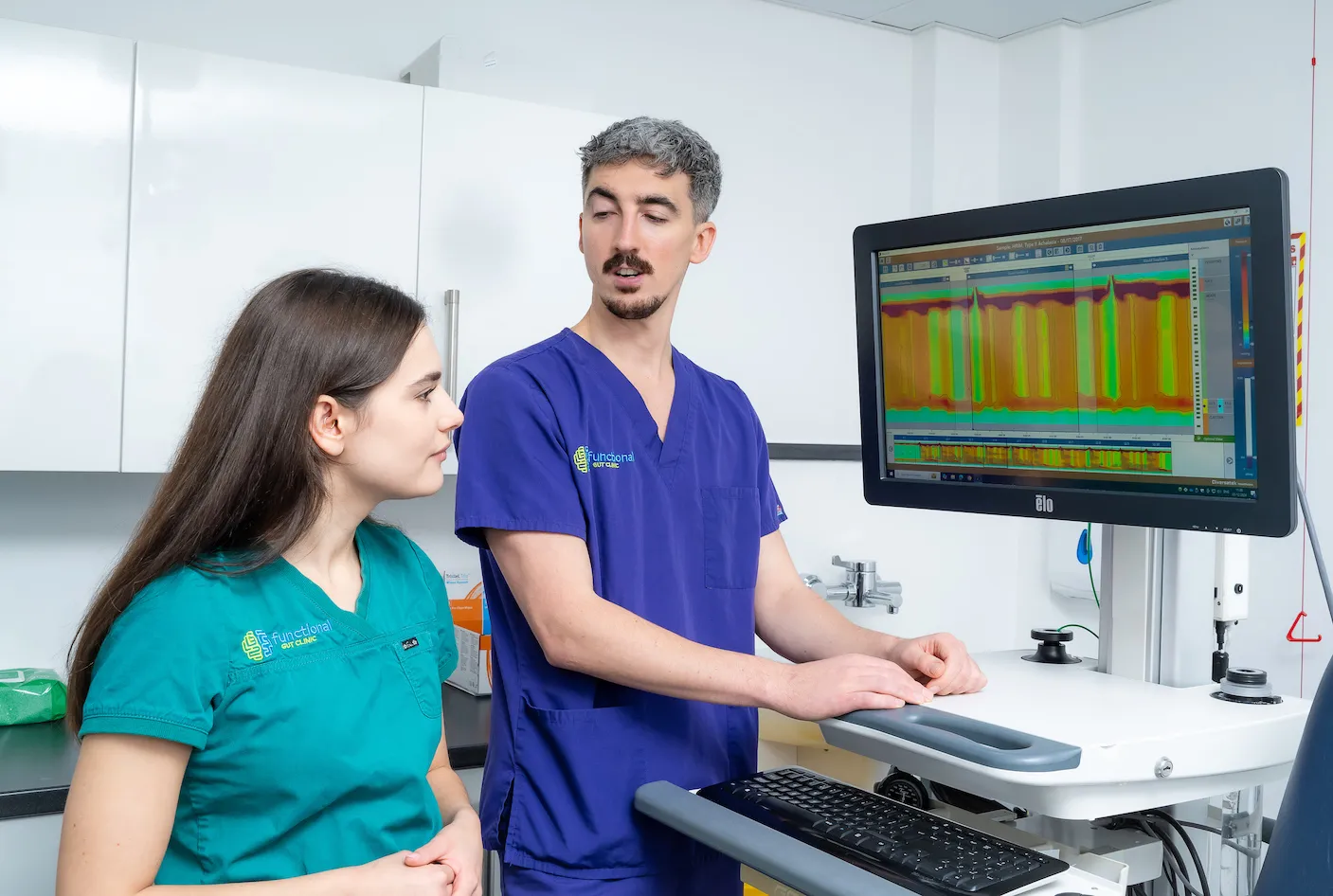Leaky gut test
For ongoing digestive problems, brain fog, low energy, or unexplained skin issues. A condition that occurs when the lining of the gut becomes permeable.
ALL TEST ARE ACCREDITED & REGULATED BY



What is a leaky gut test?
The gut lining normally acts as a barrier, allowing nutrients to pass through while keeping larger, potentially harmful particles - like toxins and bacteria - out of the bloodstream. When this barrier becomes “leaky,” it can lead to systemic inflammation and a wide range of health issues.
In leaky gut syndrome - the tight junctions in your gut lining weaken. When these junctions loosen, it can result in foreign particles escaping into the bloodstream, triggering inflammation and immune reactions throughout the body.
This condition is known as increased intestinal permeability, often referred to as leaky gut syndrome. It’s not a disease itself, but rather a sign that something deeper may be affecting your gut health.
Our test for leaky gut uses two specific sugar molecules mannitol and lactulose to measure how much passes through your intestinal lining. Here’s how it works:
· Mannitol is a small molecule that is usually absorbed easily in a healthy gut.
· Lactulose, being larger, should not cross the gut barrier unless it’s compromised.
This method is widely accepted for assessing intestinal permeability and provides valuable insight for diagnosing leaky gut syndrome.
How it works

You will drink a solution containing both sugars, and over the next 3 hours, you will collect all urine passed.

The lab will then measure how much of each sugar appears in your urine.

If elevated levels of lactulose are present, it suggests the gut barrier is more porous than it should be.
Download the information leaflet
Preparing for your test
Before you test, there are some things we ask you to do, to ensure safety and accurate results. This includes stopping certain medication and fasting for a short period.
Please read our patient information leaflet for full details.
1 week before your test
Avoid non-steroidal anti-inflammatory drugs (NSAIDs) (Ibuprofen, aspirin, and naproxen).
Stop any laxatives
Refrain from endurance exercise lasting more than 45 minutes
2 days before your test
Discontinue Loperamide (Imodium)
The day before your test
You must follow the ‘white food diet’ which consists of only the following foods and drinks:
• Plain white bread
• Plain white rice
• White potatoes (no skin)
• Baked/grilled chicken, turkey, lean beef, lean pork, white fish (no oily fish)
• Maximum of 2 eggs
• Water (non-carbonated)
• Non-flavoured black coffee (no milk)
• Non-flavoured black tea (no milk and no herbal teas)
• 1 tbsp butter/margarine/oil
• Salt to flavour food
Do not eat or drink anything else, eating prohibited foods could give false results for the test.
Do not chew gum in the 24 hours before testing.

Getting your test results
If the test shows increased permeability, it’s often a sign of something deeper, not a diagnosis on its own, but an indicator worth exploring.
Leaky gut can be linked to a number of underlying issues such as:
· Gut dysbiosis (imbalanced gut microbiome)
· Food sensitivities
· Chronic infections
· Inflammatory bowel diseases
· Coeliac disease or gluten sensitivity
· Prolonged stress or medication overuse
It’s a good idea to speak with your doctor or a registered dietitian to determine the next steps. A healthcare professional can help interpret the results and build a personalised plan to repair and support your gut.
Paying for your test
Self-paying: If you are paying for this test yourself and not through insurance, the cost will be £350
This cost includes cost of the test kit, lab analysis and the final report.
Insurance coverage
If you have private medical insurance, most companies can cover this for you.

After the Test (Post-Procedure Care)
There are no restrictions following the test. Once you have collected and returned your sample, you can continue your usual diet, medication and activities.
Your results will be reviewed by our clinical specialists, and your report will be sent securely to you. Follow-up consultations are available if you would like further discussion and support.
